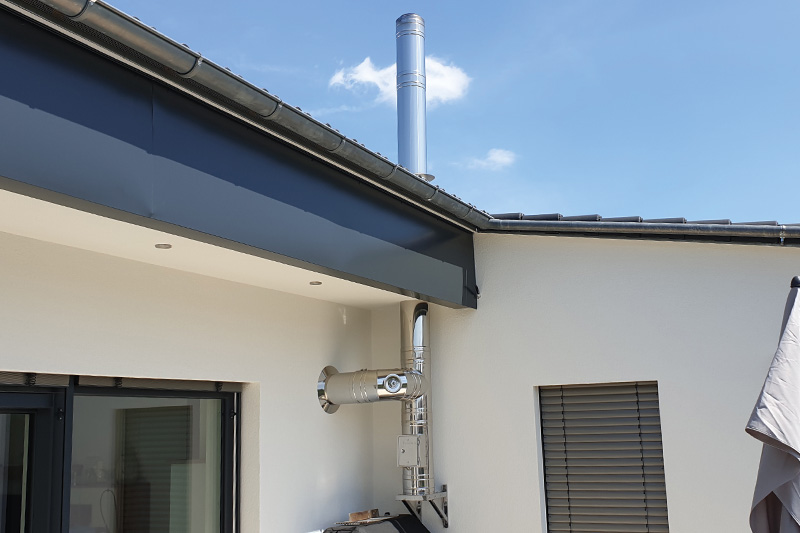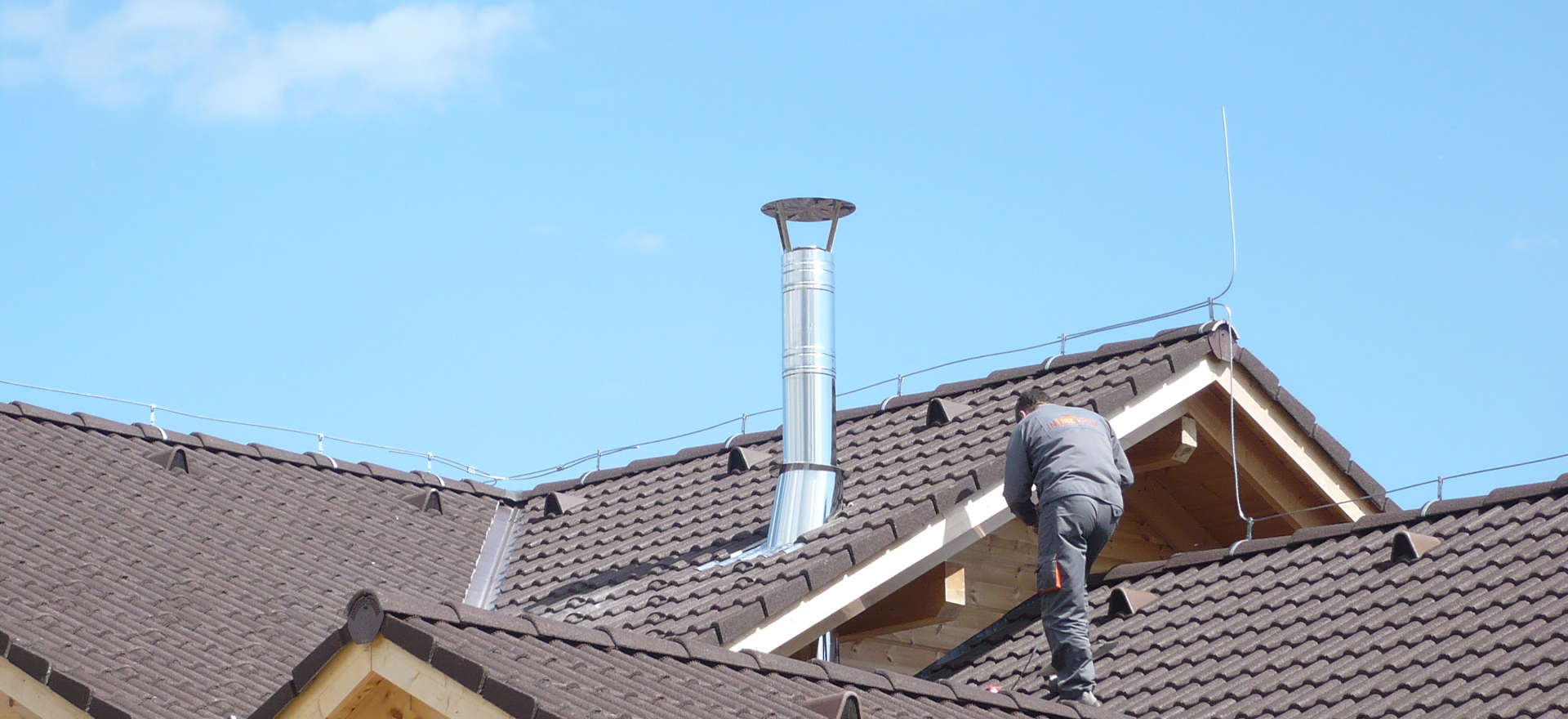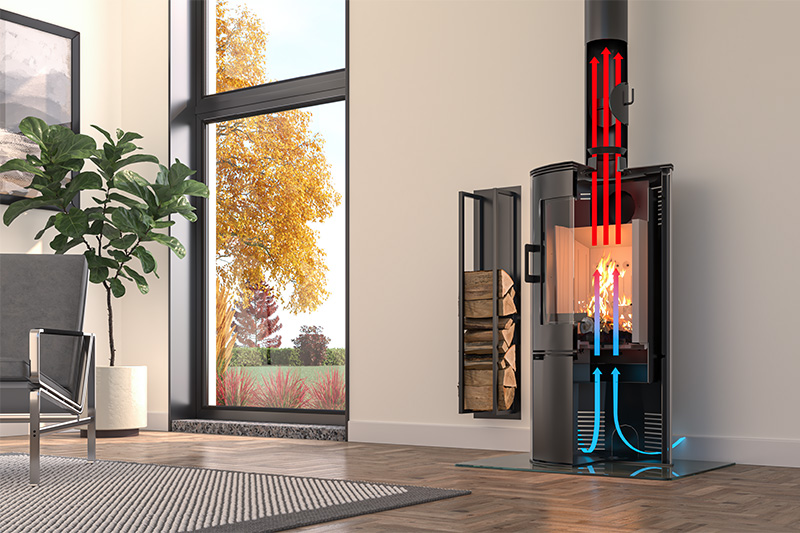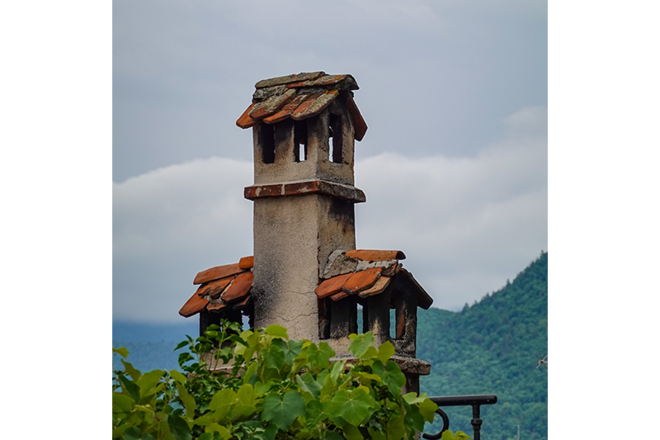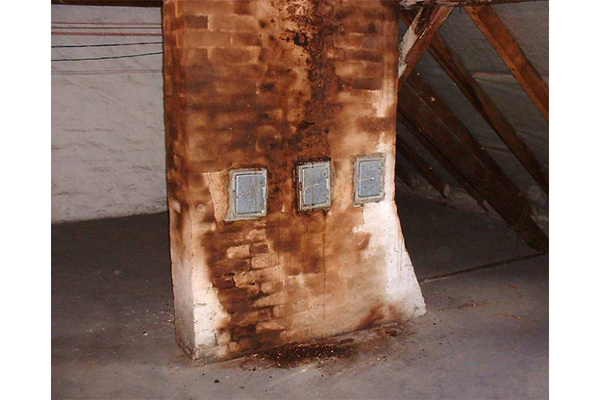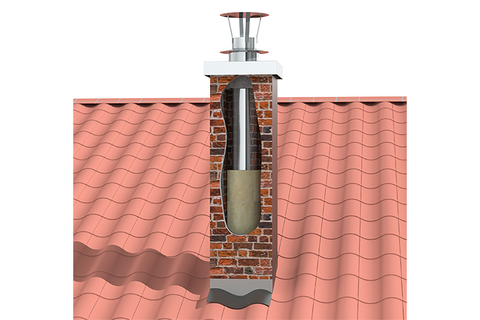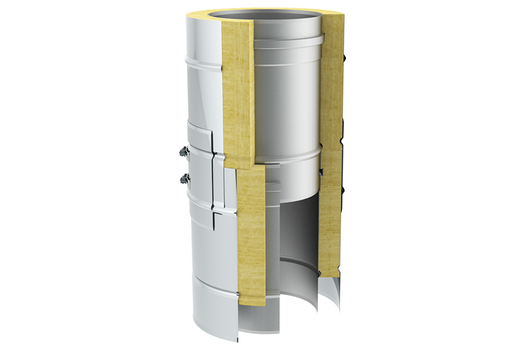Things to consider before buying a chimney
The heating and exhaust system together form a system and must be perfectly coordinated for efficient and safe operation. Before selecting the right chimney or flue gas pipe, there are a few points to consider.
Fuel
A key selection criterion when choosing the right exhaust system is the fuel used for heating. The fuels that can be used for heating can be differentiated according to their origin.
Fossil fuels were created millions of years ago from dead plants and animals and consist mainly of carbon and hydrogen. They represent a finite source of energy and when burned release large amounts of stored CO2. Fossil fuels include coal, oil and natural gas.
Biomass, on the other hand, refers to regenerative fuels that were still actively involved in the carbon cycle before they were used, which is why they are also classified as "CO2-neutral". Well-known biomass representatives are wood (logs, pellets, woodchips), plants grown specifically for energy production such as corn, grain and elephant grass, as well as organic waste of all kinds.
Exhaust temperature
The choice of fuel has a decisive influence on the exhaust gas temperature and thus also on the pre-selection of the appropriate exhaust system.
Gas or oil heaters run with significantly lower exhaust gas temperatures than furnaces that are operated with solid fuels such as wood or coal. This applies all the more to gas/oil condensing boilers, which use the energy used very efficiently, which ensures even lower exhaust gas temperatures.
Brick chimneys or conventional chimneys made of concrete require a high flue gas temperature of 356°F - 392°F at the chimney inlet, so that the temperature at the chimney outlet does not fall below the dew point. Otherwise condensate would form in the chimney and in the long term there would be a risk of moisture penetration or even the chimney becoming sooty. They are therefore only suitable for dry operation, i.e. for solid fuels with a correspondingly high exhaust gas temperature.
Jeremias stainless steel chimneys are also suitable for high flue gas temperatures, but thanks to the moisture-resistant material, they can also be used in conjunction with modern condensing boilers where the flue gas temperatures hardly ever reach 176°F and condensation in the chimney is even desirable (humid or condensing operation). The same applies to our plastic exhaust systems.
Pressure tightness
The low flue gas temperatures of modern condensing boilers may lead to the natural chimney draft being inhibited, because colder air rises much harder than the warm flue gases from solid fuel fireplaces, for example.
In order to ensure that the flue gases can escape unhindered to the outside and that combustion is problem-free, most modern condensing boilers have an integrated fan. This supports the chimney effect and ensures overpressure in the exhaust pipe, which makes the use of pressure-tight exhaust systems necessary.
Soot fire resistance
Burning solid fuel produces soot, which settles in the chimney. If dry firewood is used, the soot deposited in the exhaust pipe can be easily removed by the chimney sweep.
However, if you use fuel that is too moist or unsuitable, moist soot will also be deposited on the inner wall of the chimney. Due to its moisture content, this initially poses no danger, but usually cannot be completely removed with conventional sweeping equipment. If it then hardens with increasing exhaust gas temperature, it becomes a highly flammable hazard. Normal flying sparks from the burning process can then trigger a soot fire with meter-high flames at the top of the chimney and temperatures of well over 1000°C in the chimney.
Chimneys for dry operation with solid fuels must be able to withstand such a soot fire without damage such as cracking, otherwise they would be unusable afterwards.
The classification of the exhaust system provides information about the soot fire resistance.
All Jeremias systems that are generally approved for dry operation are soot fire-resistant or insensitive to moisture if they are used in condensing operation.
Flue gas systems that are not soot fire-resistant, such as plastic systems, on the other hand, may only be connected to fireplaces for liquid or gaseous fuels when they are in wet operation.
Exhaust system diameter
Today's cooler exhaust gas temperatures would usually no longer be sufficient for the safe discharge of exhaust gases to the outside in the large chimneys that were common in the past.
In order to obtain the desired chimney draft, smaller chimney diameters are required for today's modern fireplaces with lower flue gas temperatures. These should be determined by the specialist company using a cross-section calculation adapted to the respective fireplace.
Chimney height
The chimney height also has a significant influence on the draft behavior of the chimney. Basically, the higher the chimney, the better the chimney draft.
The respective minimum requirements for the chimney height must be observed.
Room air dependent or room air independent operation
Fireplaces can draw the air they need for combustion either from the living space (room air-dependent) or via a supply air duct from outside the building (room air-independent).
The advantage of room air-independent operation is that the usual requirements for the minimum air volume of the installation room can be omitted and the simultaneous operation of a combustion system and a ventilation system or an exhaust air extractor system is possible without any restrictions.
The fresh air can be supplied either via a separate supply air system or via a concentric flue gas system (also known as a LAS chimney), in which the supply air is routed to the fireplace via the annular gap between the flue gas pipe and the outer pipe.
Acceptance
When installing a heating system including an exhaust gas system, a number of important regulations must be observed. For example, the minimum distances to combustible components are clearly defined and must be observed. In addition, it must be ensured that the flue gas system fits the heating system, that no flue gases can penetrate the living space, that the supply of oxygen is guaranteed, that the specifications for chimney placement and height are complied with and much more.
It is therefore advisable to call in the responsible district chimney sweep as an advisor as early as the planning phase. He has to accept the entire system before it is put into operation for the first time and can give valuable tips on installation. The installation itself should then ideally be carried out by a qualified specialist company.
